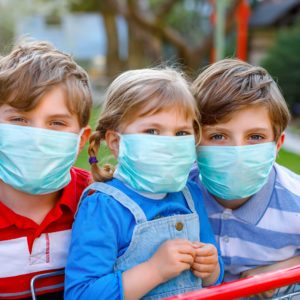In March, when Gov. Chris Sununu declared the COVID-19 emergency and closed Granite State schools, NHJournal asked a simple and direct question: Why are schools closing, but daycare centers are open?
Neither Sununu nor his health officials like Dr. Benjamin Chan had an answer based on science, biology or data. Instead, the answer was pure pragmatism: First responders and medical professionals with young children have to take them somewhere.
And so the state of New Hampshire, like most of the states in the U.S., conducted a fascinating experiment: What happens when you leave a bunch of young children bunched together in relatively unregulated daycares during the height of a viral pandemic?
The good news in the case of this novel coronavirus is, “not much.”
More than 10,000 Granite State children have been in daycare at some point during the pandemic. During the peak of infections, there were about 6,000 children in these group settings.
And how many outbreaks have there been at New Hampshire daycares? DHHS hasn’t reported any significant infections.
In fact, fewer than 2 percent of positive tests have been among children under the age of 10. Of the 681 Granite Staters who’ve been hospitalized for COVID-19, just four were under 10 years old. Only nine were under the age of 20.
The number of Granite Staters under the age of 20 who’ve died from COVID-19? Zero.
(It’s not that impressive, actually. As of July 23, the total number of New Hampshire deaths among people under the age of 50 was just eight.)
Similar results are being reported around the United States. In the Philadelphia suburbs of Delaware and Chester counties, for example, 532 of the 581 child care providers remained open during the coronavirus pandemic, according to the Pennsylvania Department of Human Services — and with no significant outbreaks of the virus.
These local numbers are backed up by national and international data showing young kids are both less likely to test positive for the coronavirus or spread it than adults. In fact, a large-scale study in South Korea found that the younger children are the less danger they face from the virus.
And yet the New Hampshire school approach thus far has been upside down from the data. Colleges are reopening, high school kids are likely to spend at least part of the school week in class, and schools are striving to keep elementary school students at home.
“The scientific case for reopening schools is compelling. Not only are young children at extremely low risk of dying from COVID-19, but they do not appear to be transmitting the virus to teachers or other adults,” Avik Roy told NHJournal. A public health expert and president of the nonprofit Foundation for Research on Equal Opportunity, Roy and his team have released a plan for returning students to class while reducing risk.
“The good news is that children are at very low risk of serious illness or death from COVID-19,” Roy reports. “Indeed, children aged 5–14 are seven times more likely to die of influenza than of COVID-19. Children aged 1-4 are 20 times more likely to die of influenza. Overall, Americans under the age of 25 represent 0.15 percent of all COVID-19 fatalities in the U.S.”
So why are so many New Hampshire school districts deciding to leave children at home doing remote learning, rather than returning to class?
While the science regarding just how low the COVID risk to kids actually is, it’s clearly not a major threat of significant harm.
Meanwhile, the risks from leaving children home are clear and undeniable: The “Zoom School” experiment in the spring was an abject failure from an academic standpoint. It’s devastating to working parents, particularly in minority families, who are less likely to have jobs that allow them to work from home.
Tens of millions of children “rely on schools not only as a place to learn and have socialization but for food,” Carol Shoshkes Reiss, a professor of Biology and Neural Science at New York University, told Live Science: “Parents need to work and be able to work.”
And then there’s the safety issue. Two of the top killers of kids 18 and younger aren’t viruses and disease. They’re accidents and homicides. The rates of both among children are far higher away from school than while on school grounds.
Homicide is the second leading cause of death among kids and teenagers ages five through 18. Fewer than 2 percent of these deaths occur on school grounds, on the way to/from school, or at or on the way to/from a school-sponsored event.
Injuries from accidents are the leading cause of death among kids. About 12,000 children die from accidents each year — many of them car crashes and almost none of them on a school bus. Another 9 million or so visit the emergency room.
These are the numbers when kids are spending eight hours a day on a school bus or in class. Imagine what they’ll be when kids are home, often relatively unsupervised as Mom or Dad try to get some work done.
It’s mathematically likely that not a single New Hampshire child will die from COVID-19 if school reopens. But it’s a mathematical certainty that some will if they’re kept at home by teachers unions and school bureaucrats

